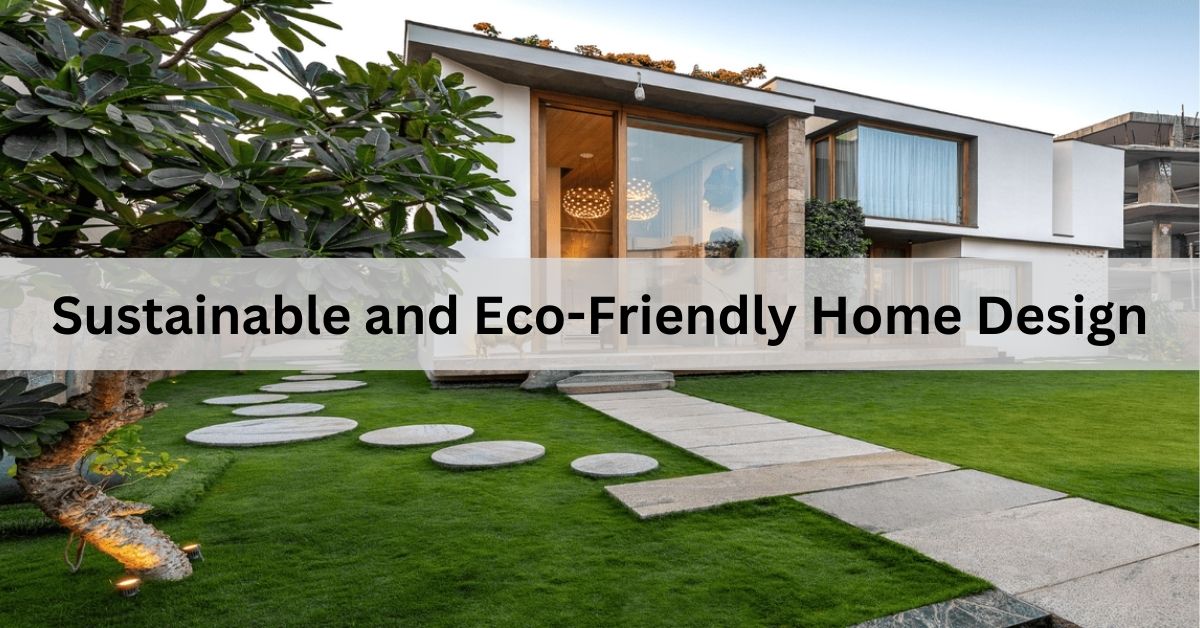In today’s world, sustainable and eco-friendly home design isn’t just a trend; it’s a responsible choice that benefits both homeowners and the environment. This article explores various aspects of sustainable home design, from building materials to energy-efficient systems, offering insights and tips for creating a home that is both eco-conscious and comfortable.
Contents
- 0.1 Choosing Sustainable Building Materials
- 0.2 Energy-Efficient Home Design
- 0.3 Water Conservation Strategies
- 0.4 Passive Solar Design
- 0.5 Indoor Air Quality and Health
- 0.6 Efficient Water and Energy Management Systems
- 0.7 Green Roof and Living Walls
- 0.8 Certification and Green Building Standards
- 0.9 Sustainable Landscaping and Outdoor Spaces
- 0.10 Long-Term Maintenance and Durability
- 1 Conclusion
Choosing Sustainable Building Materials
One of the foundational principles of sustainable home design is the use of eco-friendly building materials. Opt for materials that are renewable, recycled, or locally sourced to reduce the environmental impact of your home construction. Examples include bamboo flooring, reclaimed wood, recycled glass countertops, and natural clay plaster.
Energy-Efficient Home Design
Reducing energy consumption is a key goal in sustainable home design. Incorporate energy-efficient appliances, LED lighting, and high-performance windows and insulation to minimize energy waste. Consider installing solar panels or a geothermal heating and cooling system to further reduce your home’s carbon footprint and energy bills.
Water Conservation Strategies
Water conservation is another essential aspect of sustainable home design. Choose water-efficient fixtures such as low-flow toilets, showerheads, and faucets. Install rainwater harvesting systems and graywater recycling systems to reuse water for landscaping and other non-potable uses.
Passive Solar Design
Passive solar design utilizes the natural energy of the sun to heat and cool your home efficiently. Orienting windows and rooms to maximize natural light and ventilation reduces the need for artificial heating and cooling. Incorporate features like thermal mass, shading devices, and proper insulation to optimize passive solar gain.
Indoor Air Quality and Health
Sustainable homes prioritize indoor air quality by using non-toxic building materials and finishes. Choose paints, adhesives, and sealants that are low in volatile organic compounds (VOCs). Implement proper ventilation systems to circulate fresh air throughout your home, reducing indoor air pollutants and promoting a healthier living environment.
Efficient Water and Energy Management Systems
Smart home technologies can enhance sustainability by monitoring and managing water and energy usage. Install smart meters and sensors to track consumption and identify opportunities for efficiency improvements. Automated systems can adjust lighting, heating, and cooling settings based on occupancy and environmental conditions.
Green Roof and Living Walls
Green roofs and living walls not only enhance the aesthetic appeal of your home but also provide environmental benefits. They help regulate indoor temperatures, improve air quality, and reduce stormwater runoff. Consider incorporating rooftop gardens, green roofs, or vertical gardens to contribute to urban biodiversity and sustainability.
Certification and Green Building Standards
Seek certifications such as LEED (Leadership in Energy and Environmental Design) or Energy Star for your home to validate its sustainability credentials. These certifications recognize homes that meet stringent criteria for energy efficiency, water conservation, indoor air quality, and sustainable building practices.
Sustainable Landscaping and Outdoor Spaces
Extend sustainability to your outdoor areas by using native plants, drought-resistant landscaping, and permeable paving materials. Create outdoor living spaces that are both functional and environmentally friendly, such as rain gardens, composting areas, and vegetable gardens.
Long-Term Maintenance and Durability
Choose durable materials and systems that require minimal maintenance over the long term. Sustainable homes are designed to withstand the test of time, reducing the need for frequent repairs and replacements. Regular maintenance ensures that your home continues to operate efficiently and sustainably for years to come.
Conclusion
Embracing sustainable and eco-friendly home design is not only a responsible choice but also a rewarding investment in your future. By incorporating sustainable building materials, energy-efficient systems, water conservation strategies, and indoor air quality improvements, you can create a home that promotes environmental stewardship and enhances your quality of life. Whether you’re building a new home or renovating an existing one, these principles can guide you towards creating a sustainable living space that benefits both you and the planet.


